Casa Ideal
Proyectos Multipropósito
Sevilla 10, Piso 2
Mexico City
Through May 31
From the cozy confines of a sleeping den to the draw of the suburban dream, the concept of home holds universal allure. The postwar era witnessed a surge in suburbanization and urban expansion, exemplified by phenomena like the Sears Catalog Homes. But our contemporary moment has retaliated sharply against the “ideal” midcentury home. The success of startups like Airbnb coupled with the effects of the COVID-19 pandemic have fostered a nomadic lifestyle, prompting individuals to seek temporary abodes wherever their journeys take them.
In Mexico, a hotspot for nomadic workers, the specter of gentrification looms large. While Sears disseminated myriad affordable architectural styles to potential homeowners in the postwar era, an exhibition in Mexico City offers a fresh perspective amidst the current housing crisis. Debuting during Mexico City’s 2024 art week, an exhibition titled Casa Ideal, curated by Enrique Giner de los Ríos at Proyectos Multipropósito gallery, unites over 70 artists, designers, and architects from Mexico and beyond. Through mediums ranging from photography to architectural models, drawings, and furniture, the exhibition dug into innovative spatial languages that redefine the concept of the “ideal home.”
Though these pieces do not directly address the pressing societal issues at hand, the exhibition transcends the notion of home as a mere container. It explores the home as a refuge through fetish artifacts, communal spaces, celebrations of tradition, and city life at large—all ideas embedded in the word “home” today.
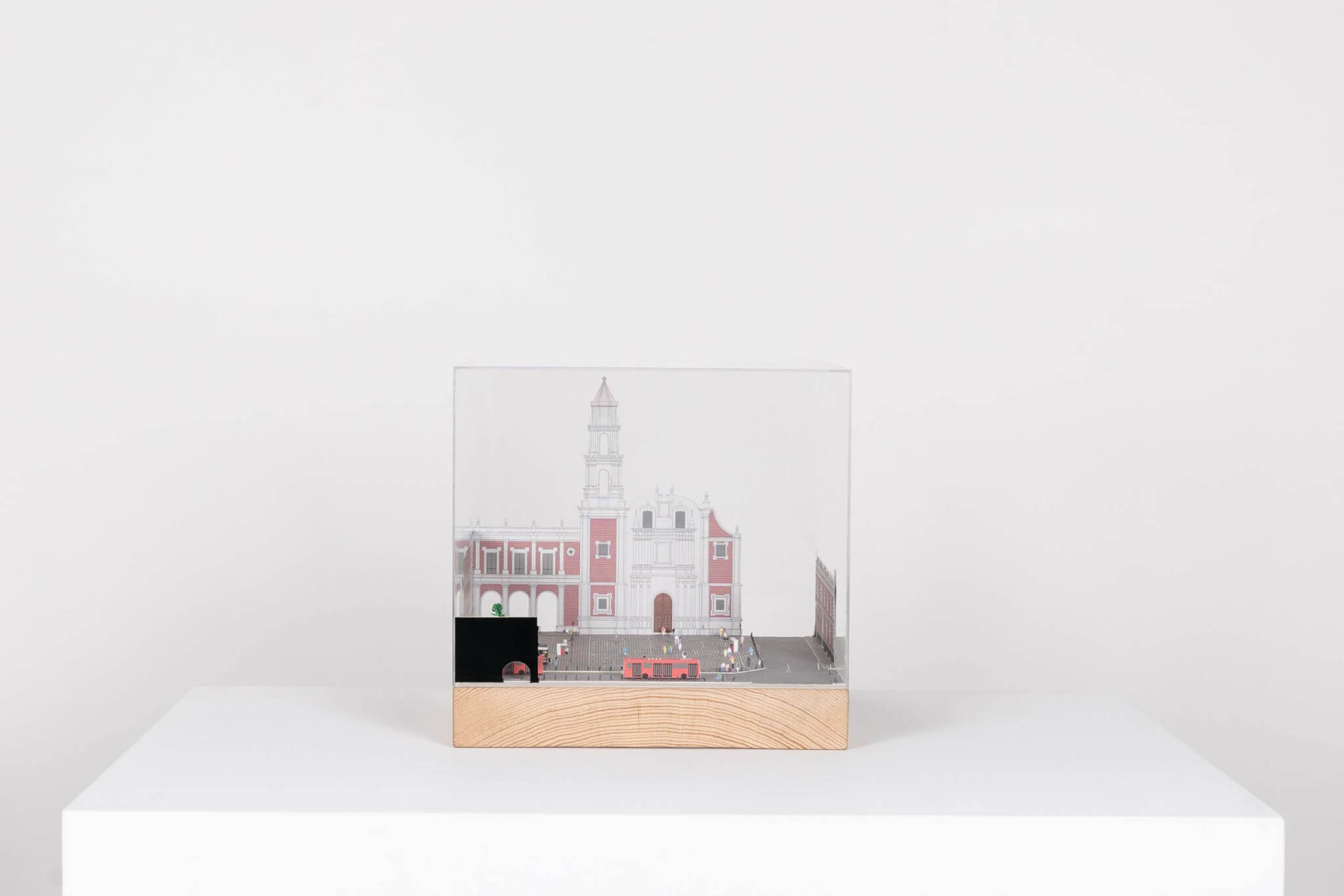
As visitors strolled into the gallery on Sevilla Street, they were met with a lobby curated by Fabien Cappello, where walls, a round bench, and a table lamp clad in identical patterns. Dancing figures popped against a vibrant yellow backdrop. Cappello’s designs embodied the intricacies of Mexico’s microeconomics, while paying homage to the traditions that shape its identity. This immersive anteroom sets the tone for the rest of the exhibition, where quotidian objects are transformed into artistic inquiries and expression.
Once inside the exhibition space, visitors encountered a mesmerizing grid showcasing individual explorations of the subconscious and unrealized homes. Each creation stood in solitary splendor, but together transformed the space of the gallery into a cityscape. Through a rich tapestry of evocative imagery, diverse materials, textures, and voids, these pieces traversed the realms of probability and impossibility, offering a surreal montage of urban life.
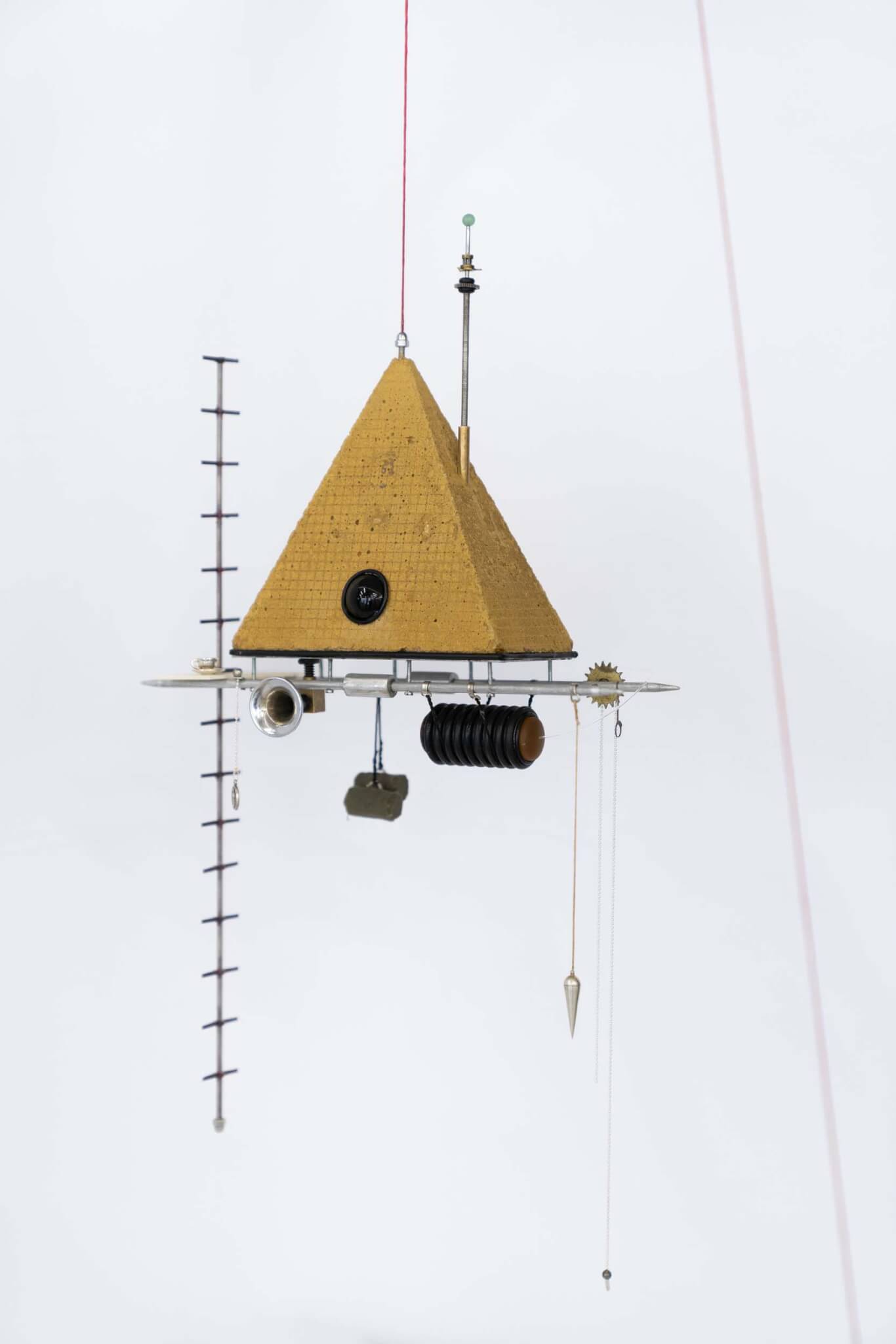
Among the standout creations, APRDELESP’s “home,” titled Anyone’s Room, paid homage to Yona Friedman’s ethos of “people’s architecture” and the fluidity of human existence. Inspired by Friedman’s large-scale temporary drawings, this architectural drawing, depicting a familiar bedroom scene with twin bed and a desk, was placed on the Plaza 23 de Mayo in Mexico City’s Historic Center. The domestic tableau, etched on the urban site’s floor by artist Santiago Marín, invited ‘round-the-clock accessibility and public interaction, fostering spontaneous improvisation and collective enrichment of public spaces. This innovative piece expanded home beyond a personal sanctuary to embrace domestic communal space.
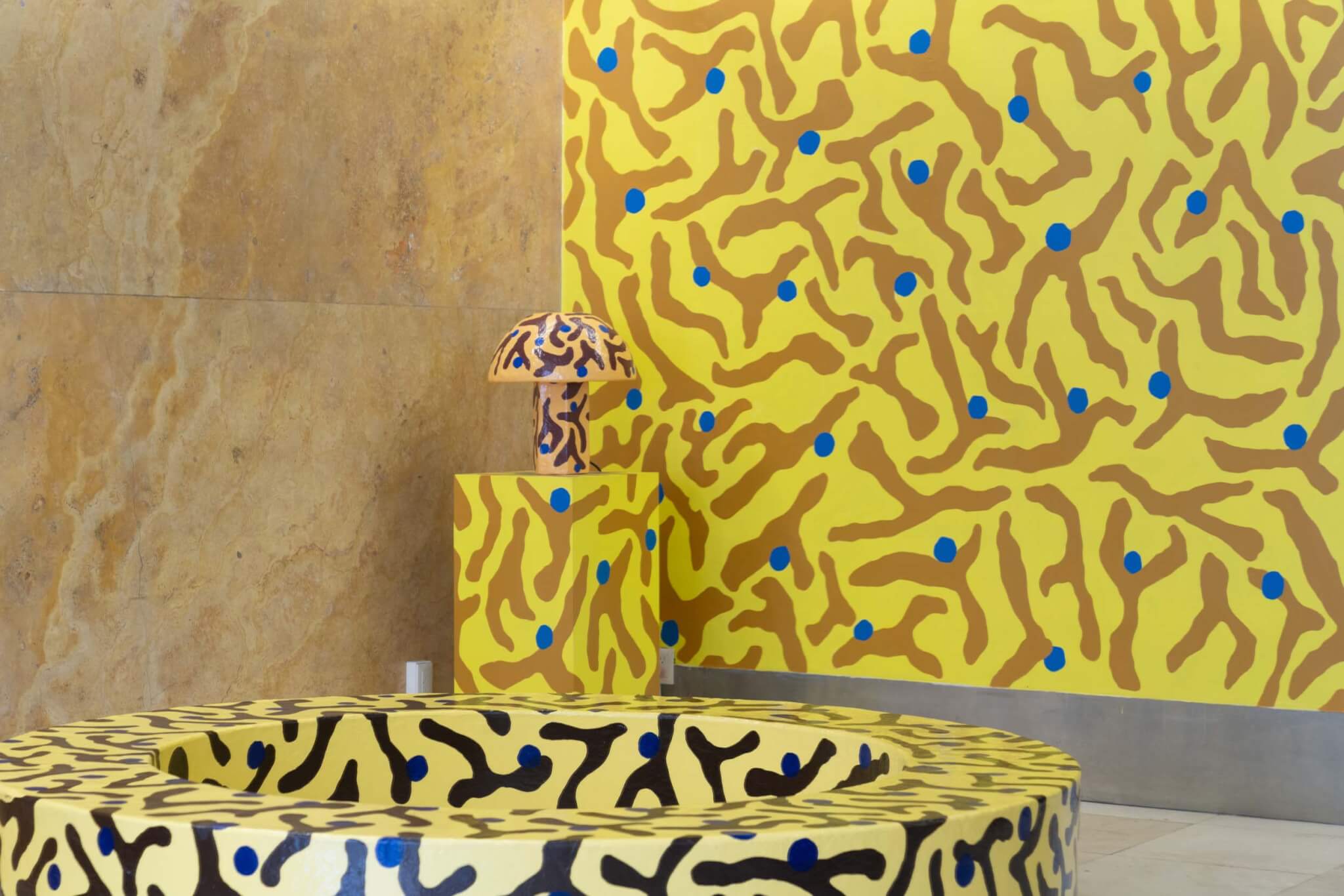
In contrast, suspended gracefully from the ceiling, Lucas Cantú’s Hang in There sculpture offers the house as a refuge. This artwork echoes Cantú’s previous site-specific installation at PRAXIS, the architecture workshop of Mexican architect Agustín Hernández Navarro. In his earlier endeavor, Cantú suspended a yellow tent amid towering sanctuary structures, reminiscent of a concrete treehouse made of truncated pyramids. Divided by a line of symmetry, this house reflects geometrical understandings found in pre-Hispanic architecture. Through his sculpture, Cantú explored the concept of inhabiting the uninhabitable—camping mid-air, suspended from a concrete tree.
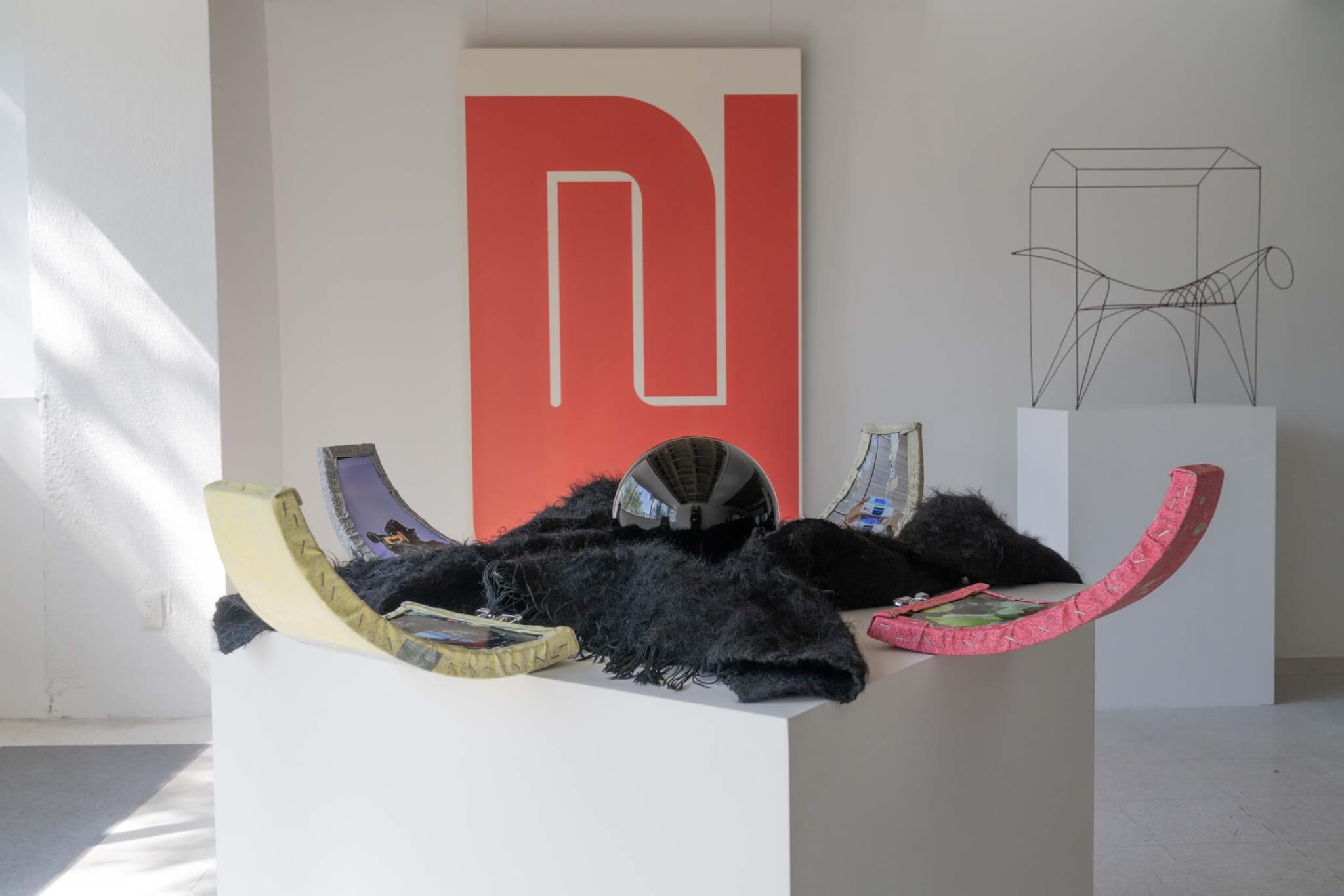
If Cantú’s work encourages us to live outdoors to disconnect, Aureliano Alvarado’s reflective black sphere, The Lacoyo’s Abode, sees life as intrinsic to the home’s interior. Resting on a furry surface, emphasizing sensory stimulation, the sphere feels almost fetishized. Beyond inviting viewers to project their desires onto it, the sphere mirrors the “city” surrounding it, as defined by the images on four canvases radiating from its center. Each canvas hinges outward, and photographic collages on these surfaces depict a highway, a silhouette of a human figure, and a life support machine—images meant to be reflected by the “house.”
José Eduardo Barajas’s acrylic and airbrush paintings evoked ethereal landscapes, beckoning viewers to immerse themselves in cherished memories—the building blocks of any home. These paintings respond to his previous exhibition at the same venue, where he substituted ceiling tiles in the massive office-turned-gallery, with tile-sized landscape paintings depicting clouds, sunsets, dice, and other motifs. Rendered on tilted canvases, these idealized landscapes of memory suggest three-dimensional objects that transcend the traditional rectangular plane, drawing inspiration from Mexican architects like Juan O’Gorman and Luis Barragán. As Barajas suggests, this makes the house an artwork, blurring the lines between traditional painting and immersive environmental design.
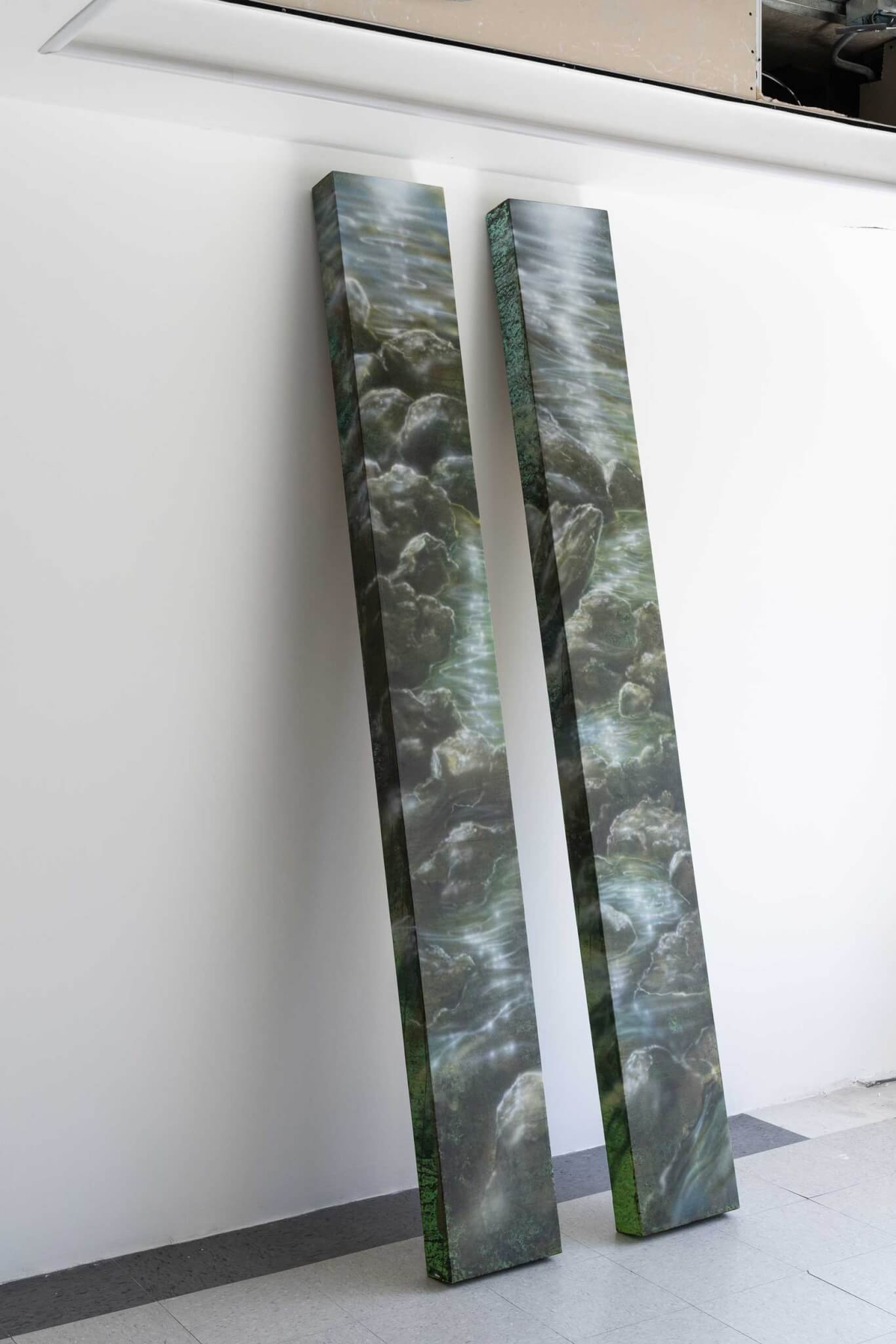
Casa Ideal presents a catalog of possibilities. “Home” is a concept that transcends mere physicality to encompass a tapestry of emotions, memories, and aspirations. Casa Ideal served not only as a showcase of creative ingenuity but also as a catalyst for contemplation, inviting us to reimagine our connections to the places we call home and where to find them.
Catherine Lie is a designer, researcher, and critic based in Mexico City. Interested in the notion of commoning, she collaborates with human/non-human/more-than-human others to explore alternative histories.

